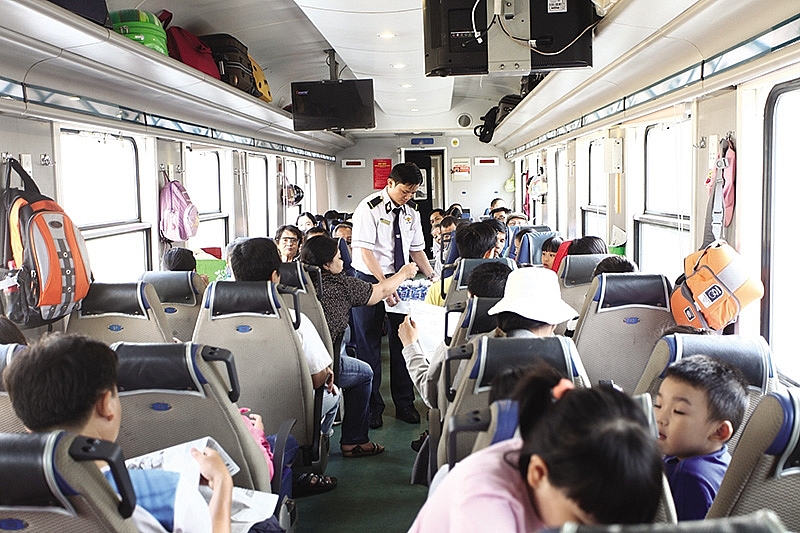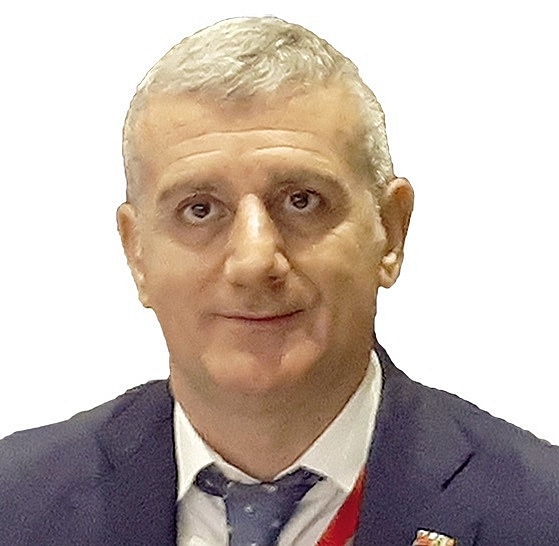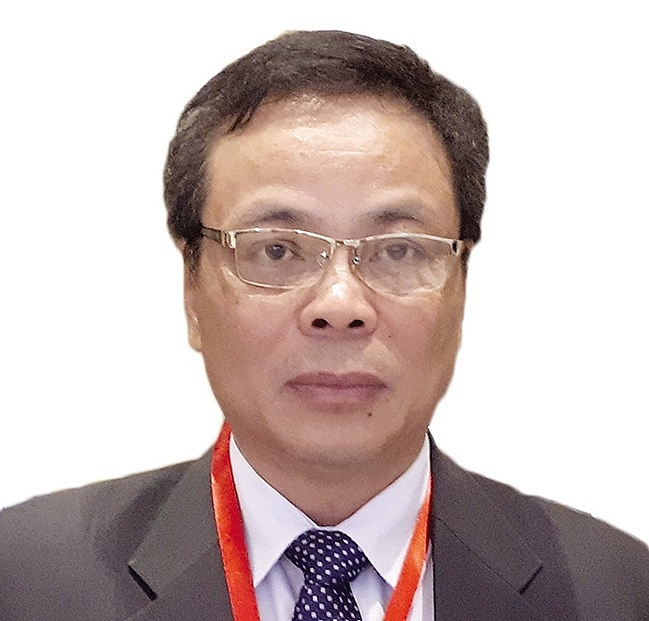ASEAN expo steps up rail revolution
 |
| Both locals and tourists would benefit from wide-scale railway transport infrastructure investment, Photo: Le Toan |
At last week’s ASEAN Rail Infrastructure and Expansion 2019 conference in Hanoi, regional business associations, rail authorities, and businesses themselves discussed the opportunities, challenges, and demands of railway development to increase connectivity in the region. Discussions focused on regulation adaption, infrastructure projects and investment, digitalisation in transforming project delivery, cross-border dispute resolutions, and partnership opportunities.
Major names in the global railway industry such as Russia’s RZD International, EHCGlobal, France’s AREP, and Tokyo Metro Co., Ltd. attended the event to showcase their solutions and seek business opportunities alongside a host of other groups.
| Projects calling for investment in Ho Chi Minh City 1. Metro Line 3a - Ben Thanh - Tan Kien (19.8km long) - Phase 1: 9.7km underground with 10 underground stations. Cost estimated at $1.82 billion - Phase 2: 10.1km elevated. Cost estimated at $1 billion 2. Metro Line 3b - Cong Hoa Roundabout - Hiep Binh Phuoc (12.1km). Cost estimated at $1.87 billion 3. Metro Line 4a - Thanh Xuan - Hiep Phuoc urban area (36.2km). Cost estimated at $3.7 billion 4. Metro Line 4b - Running from Tan Son Nhat International Airport Connection. Cost estimated at $1.1 billion 5. Metro Line 6 - 6.6km, with seven underground stations. Cost estimated at $1.33 billion 6. Tramway No.1 - Ba Son - Western Bus Terminal (12.2km), with 23 stations and depot at Eastern Bus Terminal on an area of 2.1 hectares. Cost estimated at $250 million 7. Monorail No.2 - Highway No.50 - Thu Thiem New Urban Area (27.2km). Cost estimated at $350 million 8. Monorail No.3 - Phan Van Tri - Tan Thoi Hiep (16.5km), with depot at District 12 on area of 5ha. Cost estimated at $200 million. |
According to Milko P. Papazoff, ASEAN representation at the International Union of Railways, there are key challenges in terms of innovation, standardisation, transmissions, dissemination, and strategic advice. Sustainable transport is an enabler for all sustainable development goals, and railways are the backbone of sustainable transport. In this context, Vietnam and other regional countries have high demands to develop their railway network to increase connectivity. One main initiative is developed to facilitate rail communications in Asia is the Trans-Asian Railway (TAR), an integrated network comprising 117,500 kilometres of line and serving 28 Asian countries. The project is being promoted by the United Nations Economic and Social Commission for Asia and the Pacific.
In the TAR, several missing links still need to be built and lines need to be upgraded. These include corridors from Eastern Europe to China, Mongolia, and Vietnam, ECO rail links connecting Turkey with Iran and Central Asia, and routes within ASEAN nations such as Thailand, Cambodia, Laos, Myanmar, and Vietnam.
In regards to technology, Thomas Giglione from ANT Lawyers, member of the EuroCham Legal Committee, said that technological infrastructure is now advancing much faster than physical infrastructure. “There are many changes that will affect all forms of transportation including railways, such as blockchain, 5G technology, and cross-border disputes. For example, 5G technology is going to be very disruptive and affect everything regarding Internet of Things (IoT) to rail and all the logistics involving it,” he said.
Industry insiders said that these development demands are expected to bring about huge opportunities for businesses in the global railway industry to join projects in these countries and Vietnam, as well.
According to Michele D’Ercole, chairman of the Italian Chamber of Commerce in Vietnam, Vietnam’s revised Law on Railway 2017 supplements many preferential mechanisms and policies. “This is the opportunity for state-run Vietnam Railways to open a new period of construction and development, so that the railway sector can play its rightful role as the backbone of the transport sector, contributing to the reduction of logistics expenses and enhancement of national competitiveness,” he said.
“The natural and geographical conditions of Vietnam are very suitable for the development of the railway network,” D’Ercole continued. “Investment in the system will make full use of geographical advantages and improve the connectivity, maximising the capacity of the comprehensive transport system in Vietnam.”
Currently, upgrading of bridges and rehabilitation of tunnels across the Vietnamese rail network is among the priorities. The other is to upgrade railway routes including Haiphong-Lao Cai and Hanoi-Lang Son, in order to increase links with international markets.
Under the revised Law on Railway, the railway industry is made a prioritised investment field. Individuals and companies operating in the sector are exempt from land use fees for the development of national railway infrastructure, metro lines, and specialised railway routes connecting to the national rail network and rail facilities.
Thus far, the industry has been attracting growing interest among international businesses from Japan, France, China, Russia, Germany, and the US. Outstanding names include China Railway Group Ltd. and Russian Railways.
Similarly, leading international groups specialising in solutions, machines, construction equipment, and maintenance expressed their wishes to co-operate with Vietnam Railways in future projects, including Plasser & Theurer, Robel, and Linsinger, all from Austria; German companies Strail, Kirow, and Railtech; Switzerland’s Matisa and Nencki; and French group Geismar.
| Michele D’Ercole – Chairman Italian Chamber of Commerce in Vietnam
Vietnam officially approved the revised Law on Railway which supplements many preferential and breakthrough mechanisms and policies. The new law, which came into force in July 2018, prescribes railway infrastructure planning, investment, construction, protection management, maintenance, and development with many new provisions compared to the Law on Railway enacted 13 years ago. For example, under the new law, businesses that specialise in trading in railway infrastructure and metro lines will also enjoy corporate income tax incentives in line with current rules. Additionally, individuals and units investing in developing national railway infrastructure and metro lines will have all site clearance costs covered by the state funds. In this context, the reorganisation of the railway sector opens up opportunities for the private sector to invest and improve efficiency in the provision of rail transport services. Such as efforts aim at developing the network by increasing the market share of railway transport, improving safety and efficiency, following high-level technical standards, and promoting local manufacturing so that the railway industry can significantly contribute to the nation’s development. Italian companies in Vietnam are involved in different projects which underlines the strong partnership between the two countries. Our companies continue to pay attention to metro projects, in particular subway projects No.2 and 5 in Ho Chi Minh City, and line 2 and the extension of line 3 in Hanoi. Notably, the memorandum of understanding signed between Italy and Vietnam in 2016 emphasises the bilateral co-operation for the implementation of projects and encourages the involvement and investment of Italian private companies in the fields of infrastructure and transport. Hoang Ngoc Tuan - Deputy director Ho Chi Minh City Management Authority for Urban Railways 2
In the past, metro line projects in Ho Chi Minh City were mostly funded by preferential official development assistance (ODA) package. But now, as Vietnam is now above the low- and middle-income countries, ODA for Vietnam has reduced, and the interest rates of ODA loans are on an upward trend. In this context, Ho Chi Minh City is now calling for investment from diversified sources. The city is studying the possibilities of developing metro projects under the public-private partnership (PPP) model. Yet today no PPP projects are carried out in the railway industry. With a population of around 10 million people, Ho Chi Minh City is in high need of developing metro projects to serve the city’s growing transport demands. We are calling for capable businesses to join some metro projects in the city via international bidding. By 2030, we will focus on five metro lines: Metro lines 1, 2, 3a, 3b, and 5, with the total investment of $8.6 billion. Besides these routes, we welcome investors in others. |
What the stars mean:
★ Poor ★ ★ Promising ★★★ Good ★★★★ Very good ★★★★★ Exceptional
 Tag:
Tag:
Related Contents
Latest News
More News
- EVN launches major power infrastructure projects nationwide (December 19, 2025 | 18:17)
- VAL inaugurates second production line to meet domestic animal feed demand (December 19, 2025 | 16:37)
- Sun Group pioneers urban tram system in Phu Quoc (December 19, 2025 | 15:00)
- Seven major projects launched to drive Hanoi’s next growth phase (December 19, 2025 | 14:00)
- Securing capital and efficiency for Vietnam’s 2026-2030 growth ambitions (December 17, 2025 | 10:00)
- Vietnam bucking trend in the global M&A landscape (December 16, 2025 | 14:20)
- HDS Summit spotlights Vietnam’s rising role in regional supply chains (December 16, 2025 | 08:00)
- Kolon signs $48 million airbag supply deal with Autoliv (December 15, 2025 | 18:14)
- National Assembly approves Vinh–Thanh Thuy expressway project (December 15, 2025 | 18:02)
- Quang Tri green-lights $1.59 billion LNG-fired power project (December 15, 2025 | 17:59)

























 Mobile Version
Mobile Version